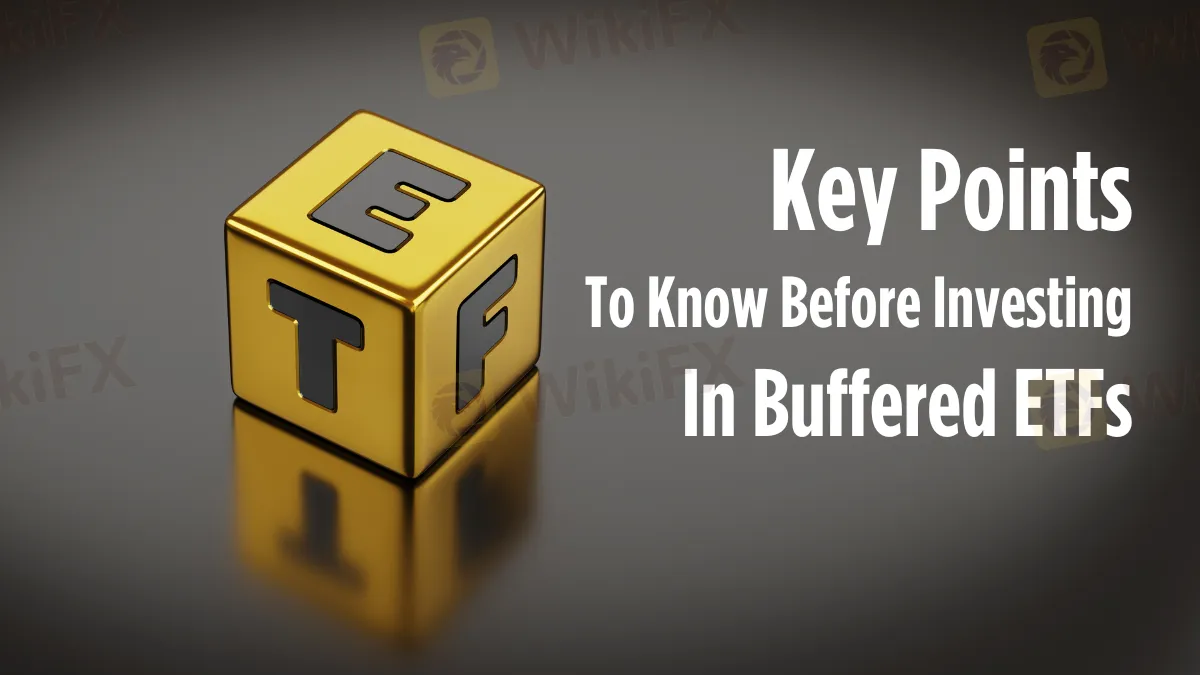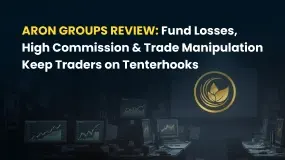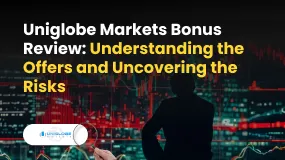简体中文
繁體中文
English
Pусский
日本語
ภาษาไทย
Tiếng Việt
Bahasa Indonesia
Español
हिन्दी
Filippiiniläinen
Français
Deutsch
Português
Türkçe
한국어
العربية
Key Points to Know Before Investing in Buffered ETFs
Abstract:Learn the essential details about Buffered ETFs, a strategic tool offering market downside protection with upside potential in today's volatile financial landscape.

In today‘s rapidly shifting financial environment, market volatility concerns many investors. One solution gaining traction is Buffered ETFs (Exchange-Traded Funds). These investment vehicles offer downside protection while still allowing participation in market gains, making them an increasingly popular option for those seeking to hedge against potential losses. Here’s what you need to know before investing in Buffered ETFs.
What Are Buffered ETFs?
Buffered ETFs are exchange-traded funds that incorporate a protective buffer against market declines. In simple terms, they allow investors to limit their losses when the market drops while still giving them an opportunity to participate in gains. This balance between protection and growth appeals to those looking for more security in their investments without entirely forgoing market exposure.
The concept behind Buffered ETFs is to provide a pre-set level of protection on the downside, often through options contracts, while capping potential gains on the upside. For example, one of the popular Buffered ETFs from Innovator ETFs, under the ticker PAUG, offers 15% downside protection, meaning that the first 15% of losses are buffered. At the same time, investors can still benefit from a 12.8% upside.
Why Consider Buffered ETFs?
For many investors, the appeal of Buffered ETFs lies in their ability to manage risk in an unpredictable market. Bruce Bond, CEO of Innovator ETFs, highlights this unique feature, noting that Buffered ETFs fit well for investors seeking market exposure without taking on the full risks associated with it. With monthly issues of new Buffered ETFs, investors can align their investments with specific market conditions.
Bond recommends holding onto these ETFs for the entire year as they are built around one-year options. “At the end of the year, the options are fully valued, and then we reset it for the following year,” Bond explains. This reset provides investors with a structured timeline for their investments, allowing them to manage their expectations and plan accordingly.
Skepticism Around Buffered ETFs
Despite their growing popularity, only some are convinced that Buffered ETFs are the best solution. Mark Higgins, Senior Vice President of Index Fund Advisors, expresses caution over these strategies. He argues that some investors might be creating expensive solutions for what could be a simpler problem – dealing with market volatility.
Higgins believes there are more cost-effective ways to navigate uncertainty, such as staying disciplined with long-term investment strategies and consulting with a financial advisor rather than making drastic moves out of fear. According to Higgins, advisors who maintain a calm approach can help investors manage their emotions during turbulent times without the need for complex strategies like Buffered ETFs.
Why Are Buffered ETFs Growing in Popularity?
Buffered ETFs have seen a remarkable surge in interest recently. As of the latest figures, these funds have accumulated around $45 billion in assets under management, with much of that growth occurring in the past year. Several factors contribute to the rise of Buffered ETFs, including market volatility, interest rates, and implied dividends.
- Volatility: Market volatility, or the expectation of future price movements, plays a crucial role in the pricing of Buffered ETFs. When volatility is high, the upside cap (the limit on potential gains) tends to increase, offering investors a more attractive opportunity for growth.
- Interest Rates: Changes in interest rates also influence the pricing and performance of these funds. Higher interest rates generally mean higher premiums from selling call options, which translates to a higher upside cap. Conversely, as interest rates rise, the cost-effectiveness of the downside protection increases.
- Implied Dividends: The dividends factored into the pricing of the underlying assets affect the performance of Buffered ETFs. By considering implied dividends, these strategies often provide more tax-efficient returns than traditional dividend-paying stocks.

The Mechanics Behind Buffered ETFs
Buffered ETFs achieve their protective features through a series of options contracts. These contracts are carefully structured to create a buffer against losses while limiting gains. The process often involves a combination of buying and selling options that set both the downside protection and the upside cap.
This complex arrangement allows investors to customize their risk exposure based on their financial goals. Some investors prefer short-term protection, while others might be looking for long-term growth with a safety net in place. The flexibility offered by Buffered ETFs makes them a versatile tool for different market conditions.
The Role of Buffered ETFs in Risk Management
Buffered ETFs are increasingly becoming a part of diversified portfolios, especially in times of market uncertainty. In inflationary environments, where both stocks and bonds can experience declines, these ETFs provide a way to manage risk without abandoning growth opportunities altogether. They allow investors to stay in the market, mitigating the fear of missing out on gains while protecting against significant losses.
In addition to offering downside protection, Buffered ETFs help investors safeguard their existing gains. As equity markets reach all-time highs, many are concerned about potential downturns. Buffered strategies reduce a portfolios exposure to market swings or equity beta while still enabling participation in future growth.
Are Buffered ETFs Right for You?
Investing in Buffered ETFs is not a one-size-fits-all solution. These funds are best suited for investors who want to balance risk and reward. They provide a structured approach to managing downside risk while still allowing for some market participation, making them appealing in volatile markets.
However, its essential to consider the costs associated with Buffered ETFs. While they offer protection, the cap on potential gains means that investors might miss out on significant market rallies. Additionally, some experts argue that more straightforward strategies could be just as effective in managing risk without the added complexity and expense.
Final Thoughts
Buffered ETFs are a powerful tool for investors who seek protection against market declines while still wanting to benefit from upside potential. As market volatility continues to dominate the financial landscape, these ETFs offer a way to manage risk without stepping entirely away from growth opportunities.
Financial professionals can incorporate Buffered ETFs into investment plans by understanding the key factors that influence their pricing and performance. Whether you are a conservative investor looking for protection or someone trying to navigate today's complex markets, Buffered ETFs might offer a balanced approach to your investment strategy.
Before diving in, evaluating your financial goals, risk tolerance, and market outlook is crucial. Consulting with a financial advisor can help determine whether Buffered ETFs align with your investment strategy. As always, careful consideration and planning can go a long way in ensuring long-term success.
Related news:
Stay informed about Buffered ETFs and their role in managing market risk. Visit WikiFX News for the latest updates and insights on this and other financial strategies.

Disclaimer:
The views in this article only represent the author's personal views, and do not constitute investment advice on this platform. This platform does not guarantee the accuracy, completeness and timeliness of the information in the article, and will not be liable for any loss caused by the use of or reliance on the information in the article.
Read more

Apex Markets Review: Traders Outraged Over Withdrawal Denials & Other Trading Issues
Struggling to access fund withdrawals from Apex Markets for months? Does the broker remain silent on fund withdrawal issues? Does the Saint Vincent and the Grenadines-based forex broker reject your winning trades? Have you failed to get a refund into the card used for deposits? Did the broker deduct from your trading account instead? Traders have been imposing these scam allegations while sharing the Apex Markets Review online. We read the reviews and shared some of them below. Take a look!

tastyfx Exposed: Fund Losses, Trade Manipulation & Account Related Hassles Hurt Traders
Are fund losses normal for you at tastyfx? Does the US-based forex broker constantly manipulate prices to hit your trading experience? Do you fail to receive a reply from the broker on your fund withdrawal requests? Do you constantly face trading account issues with tastyfx? It’s time to read the tastyfx review shared by traders online.

Aron Groups Review: Fund Losses, High Commission & Trade Manipulation Keep Traders on Tenterhooks
Have you lost your hard-earned capital while trading via Aron Groups Broker? Has the high commission charged by the broker substantially reduced your trading profits? Does the Marshall Islands-based forex broker constantly manipulate spreads to widen your capital losses? Have you been lured into trading courtesy of Aron Groups No Deposit Bonus, only to find that you had to deposit capital to get a bonus? All these and many more trading issues have become synonymous with the experience of Aron Groups’ traders. Consequently, many traders have shared negative Aron Groups reviews online. In this article, we have shared some of their reviews.

Uniglobe Markets Bonus Review: Understanding the Offers and Uncovering the Risks
Many traders start looking for a new broker by searching for special deals and bonuses. The phrase "Uniglobe Markets no deposit bonus" is something people often search for. Let's address this question clearly and directly. Based on all the information we have, Uniglobe Markets does not currently offer a no-deposit bonus. Instead, this broker focuses on bonuses that require you to deposit your own money first. To get any bonus credits, traders must put in their own capital. Read on to learn how this entire bonus works out for traders.
WikiFX Broker
Latest News
Pinched By Penny Shortage, US Retailers Beg Congress To Step In
PINAKINE Broker India Review 2025: A Complete Guide to Safety and Services
The United States Outgrows All Its Major Peers
Canary Wharf Address Scam Resurfaces: FCA Exposes 20+ Clone Template Forex Platforms
Seychelles FSA Flags Clone Website Impersonating Admiral Markets
Is Nash Markets Regulated or Risk? Truth About Nash Markets’ License & Withdrawal Issues
Webull Widens Crypto Futures with Coinbase Derivatives
Latest FCA Daily Alerts and Consumer Warnings for 2025
CySEC Blocks Certification Access to Combat Advisor Impersonation
Angel one 2025 Review & Complaints
Currency Calculator





